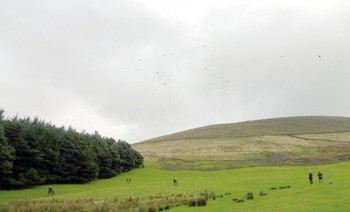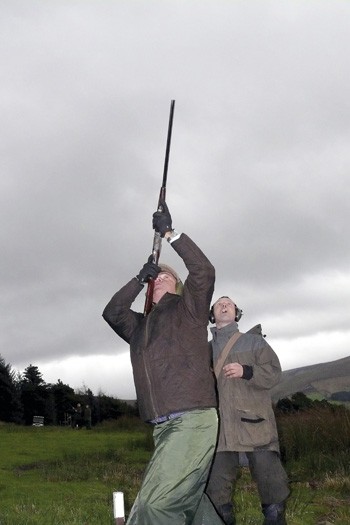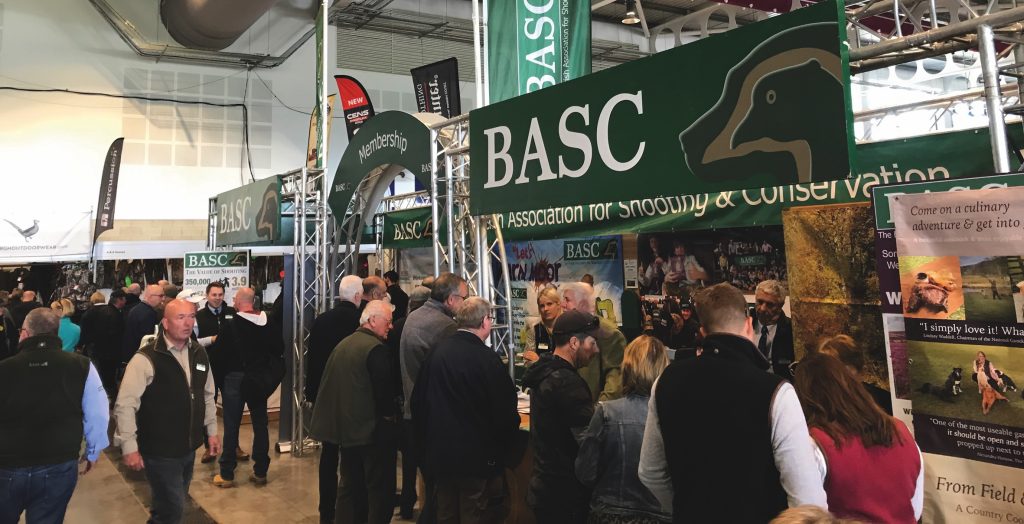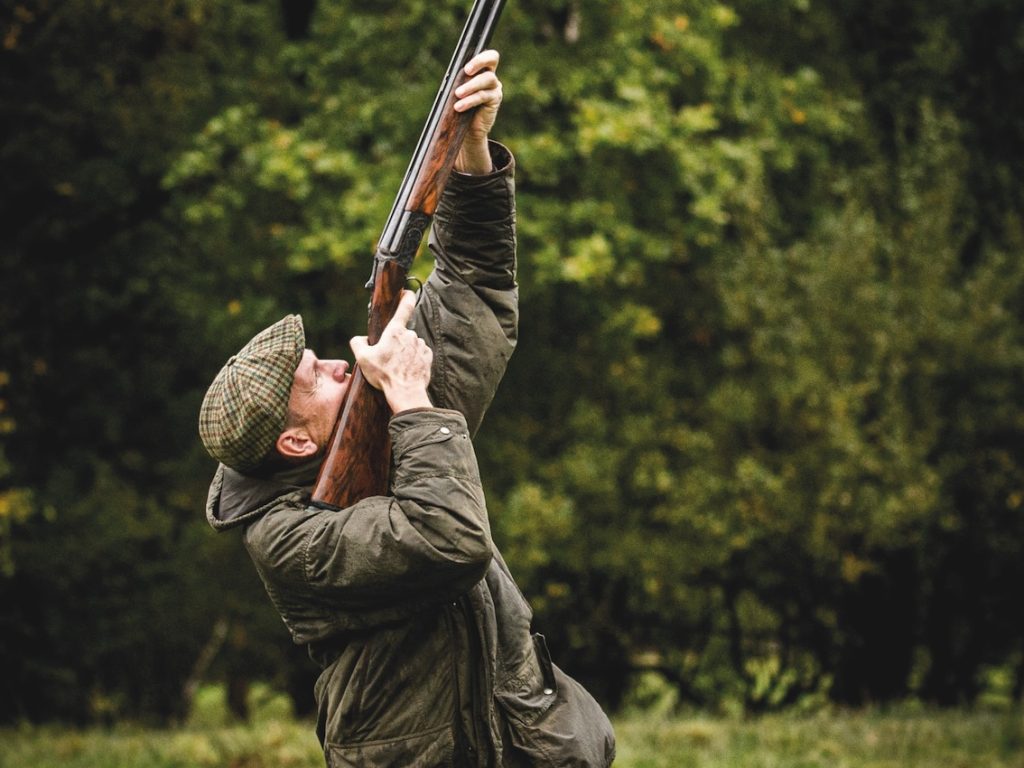Win CENS ProFlex DX5 earplugs worth £1,149 – enter here
Game shooting at Bleasdale, Lancashire
Game shooting at Bleasdale, Lancashire: A game shooting feature from the March 2010 issue of Shooting Gazette.

Game shooting at Bleasdale, Lancashire: This pheasant and partridge shoot is set in a moorland fringe habitat and exploits everything nature supplies to provide the most testing of birds.
I first heard of Bleasdale through an old and now departed friend, Dr Philip Casson.
Philip originally hailed from Australia, lived in England for a long time and then moved to America, where he had a reputable plastic surgery practice.
For years he took his roving syndicate to Stanage Castle in Shropshire but after a while they decided that staying at the castle was too expensive.
So they began taking days a little further north in Bleasdale instead.
There is actually another alternative at Stanage, but that would have meant staying at the old dowager house, which is now run as a hotel.
Andrew Witham has had the shooting at Bleasdale for a long time.
The estate is owned by the Duckworth family who decided that they did not want guests staying in the manor house, so now Andrew puts everyone up at Calderbank Lodge.
This is a Georgian building converted to a hotel at Oakenclough, approximately five miles from the town of Garstang.
Oakenclough is a village on the edge of the Forest of Bowland, near the coastal regions of the Fylde and the Wyre. The lodge is comfortable and serves good food. The bedrooms are large with en suite bathrooms. The drawing room has a pair of stuffed standing Himalayan bears watching over activities. And there are many other curios, often of a taxidermal nature, around the house.
The walk to the first drive, Middle of Big Wood was a long one for me.
Peg one (they number from the right) was quite close to the vehicles but mine, seven, meant I was rather on my own, save for my stuffer.
We were almost out of view from the other guns on the far side of a tall wall too.
I was shooting my wife’s shotgun. We were going to Ireland the following day and I hadn’t recieved my Irish licence in time. Being a little short for me, the gun put me off slightly.
Of all gun measurements, I find length of pull least critical, assuming it is not so short that one bangs oneself in the nose with one’s thumb or so long that the heel hooks up on the jacket during mounting.
We had a number of early birds over us and were covering/shooting quite a wide swathe of ground. While I had relatively few birds as true driven targets, I had a large number of long crossers on both sides – the occasional advantage of being an end gun – which kept me amused and which gave me time to settle in with the new shotgun.
Looking down the line towards the middle I saw that many guns were having great sport with tall and fast pheasants coming through, many of which were being well dispatched.
The nexr drive, End Plantation, was my favourite drive of the day at Bleasdale. After some chopping and changing I ended up on peg four.

We were a team of eight and Andrew changed the pegs around in the interests of improved sport for all and did an excellent job.
These were perhaps not, in the main, extreme birds but still more than tall enough to be testing, and the guns had to work hard for their left and rights.
Another gun, who was two pegs down was enjoying the drive but further to his left the next gun was not quite so fortunate – it’s the luck of the draw.
The third drive involved a long hike up a hill to Breezes Bank.
I was glad that I had a stuffer to carry my guns and cartridges, as my old, bad back would have given out.
The birds were being driven out of bracken, which makes for an excellent ‘cover crop’.
Most unfortunately, a couple of hares came through early, no doubt pushed by the beating team.
The hares spooked the birds and there were a couple of very big flushes so the majority of the pheasants went though the line all too quickly. Some birds came through well though.
James Horne was at the top of the woods on the left hand side. And this proved to be the best peg on the drive as that was the direction that most of the birds that remained wanted to go.
The fourth drive was lunch, which worked out well as my wife Renata had stayed in that morning.
When we went back out to shoot she brought our young dog Bubba with her. Calderbank Lodge is a dog-friendly establishment and we were able to keep the dog in our room to sleep overnight.
On Coolam, some guns were in the open and some were in rides in the wood. Again I had a longish walk to peg eight and there were still two guns beyond me on this crescent shaped line. And it was an excellent drive for most guns, with plenty of tall birds for all.
Bubba picked-up around a dozen of the birds that I shot. That was certainly enough for an inexperienced dog to deal with and we put him back on the lead soon afterwards. All the birds shot were sporting but, as is the case on most drives at all shoots, peg draw counts.
Andrew told me that the best drives were actually going to be shot on the second day and it was a shame we couldn’t stay.
We did stay in the lodge for a second night though and had another splendid evening.
But we were sad to head off to Ireland in the morning, as the clearly excited team prepared to head out for another day of some of the best and most varied shooting to be had.
The keepers and the drives
The headkeeper is Mick Slinger and he has two beatkeepers, Stuart Taylor and Aaron Cullen. They employ a large team of beaters and usually have five pickers-up, most with dogs. Many of the drives are on moorland fringe and some, like Arrow Bank, involve a huge amount of walking for beaters over this very tough terrain. Occasionally there are a few grouse but drives like Calder A are excellent examples of how the moorland can be used to create testing partridge shooting. The beaters cover about a mile of moorland, producing a steady trickle of racing birds over the guns who peg out with their backs to the River Calder. Elsewhere, Geoff’s Gill can produce extremely challenging pheasants. Here the beaters split into two groups and approach the gill from either side. Given the right wind, the pheasants that gather here will lift and then soar high over the line of guns below. As they do so they slide on the wind, making judgement of the shot difficult. On day two of the shoot featured here the very experienced team were left scratching their heads and happily doffing their caps to the birds on this drive. The star drive on day two was End of the Big Wood. Here the whole team line out 30 yards from the bottom edge of the wood, with one back gun, who on this occasion was shoot manager Andrew Witham. It is a serious pheasant drive, which plays a significant part in a four drive day. The average number of cartridges used per gun was around the 100 mark for this drive alone.
Related Articles
Get the latest news delivered direct to your door
Subscribe to Shooting Times & Country
Discover the ultimate companion for field sports enthusiasts with Shooting Times & Country Magazine, the UK’s leading weekly publication that has been at the forefront of shooting culture since 1882. Subscribers gain access to expert tips, comprehensive gear reviews, seasonal advice and a vibrant community of like-minded shooters.
Save on shop price when you subscribe with weekly issues featuring in-depth articles on gundog training, exclusive member offers and access to the digital back issue library. A Shooting Times & Country subscription is more than a magazine, don’t just read about the countryside; immerse yourself in its most authoritative and engaging publication.







